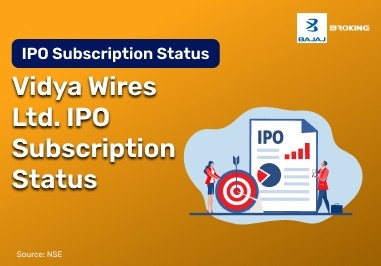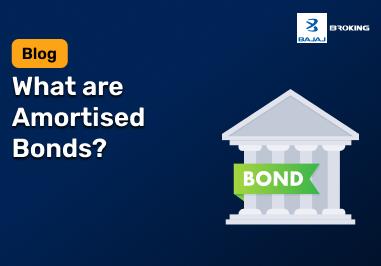A company's financial position is presented in two formal ways. These are standalone and consolidated financial statements. On the one hand, there are the standalone financial statements, which show the financial performance and position of a single entity. It is usually the parent company, and no subsidiary is taken into account in a standalone statement.
On the other hand, there are the consolidated financial statements, which contain a detailed presentation of the finances of the parent company and all its subsidiaries. By using the consolidated and standalone financial statements, it becomes easier to analyse a company's finances and make informed investments and decisions.
Overview of Consolidated Financial Statements
Consolidated statements are statements that combine the financials of both a parent company and its controlled subsidiaries and are prepared as one, including assets, liabilities, revenue, and expenses. They remove intercompany transactions so as to prevent duplication and operate within positions such as GAAP or IFRS. Generally, a subsidiary is one in which the company owns 50% or more of another company, giving the parent company the option to have it as part of a consolidated financial statement.
Source: Investopedia
Overview of Standalone Financial Statements
Standalone financial statements provide the financial performance, position, and cash flows of a single entity, excluding subsidiaries, joint ventures, and associate companies. They are accompanied by fundamental reports, including the balance sheet, income statement, and cash flow, which provide an overview of the organisation's fundamental activities.
These statements are easier to compile, create transparency, and allow comparisons with other comparable companies. On the legal front, the Companies Act 2013 and Ind AS obliges Indian companies to present standalone accounts, whose reports are clear even where the group audits are conducted.
Example of Standalone vs Consolidated Statements
In Q4 FY18, at a standalone level, Tata Motors saw its revenues (India operations) grow by a healthy 45 percent, but its profitability at a consolidated level nearly halved owing to the drag created by Jaguar Land Rover (JLR). In retail sales, JLR dipped by 3.8% and the profit before tax dwindled by 46 percent due to heavy depreciation, amortisation, and a development charge of 97 million pounds.
The impact of Brexit-induced regulation costs, diesel regulation, and increased capital investment (4.2 billion Indian rupees in the previous year) on group performance was very high. As a result, stand-alone PAT was profitable, but consolidated results represented substantially compromised profit.
Source: Livemint
Standalone vs Consolidated Financial Statements— Key Differences
When comparing standalone and consolidated financial statements, several critical aspects emerge:
Standalone: Reports the financials of one legal entity and are generally used for internal evaluation, competitive benchmarking, as well as compliance with standalone annual filing as required by the Companies Act and SEBI LODR Regulations.
Consolidated: Combines all the financial accounts between the parent and the subsidiary to produce a single report, which eliminates any intercompany transactions to reflect the economic reality of the group, which is required by regulation LODR in the case of an entity having control over a subsidiary.
Complexity and adjustments
Standalone reports: Drawn up from data of an individual entity without adjustments, less complex, and faster to prepare.
Consolidated reports: Need to reconcile accounting policies, remove intra-group transactions, and account for non-controlling interests, as required by Ind AS and IFRS standards.
Financial ratios and valuation
Standalone P/E: Only captures the parent entity's earnings.
Consolidated P/E: Captures group-level profitability and is more pertinent to investors evaluating total corporate value and risk profile.
Standalone filings: Required for all companies under MCA/SEBI regulations, and individual standalone XBRL filings are needed.
Consolidated filings: Necessitated when a company has over 50 percent control in subsidiaries, and many times with IFRS/GAAP frameworks.
Applications to stakeholders
Management: Dependent on standalone statements for unit-level performance, budgeting, and strategy planning.
Investors and creditors: Prefer consolidated statements for an overall view of group-wide performance, diversification, and debt capacity.
Intercompany eliminations
Standalone: Posts intercompany transactions as receivables/payables.
Consolidated: Removes these transactions entirely to prevent double-counting, providing accurate reporting of group financials.
Standalone: It offers unhindered visibility to the operations and financial position of the parent.
Combined: Provides a comprehensive picture of how the group is performing, but could mask those risks or inefficiencies later because of merging and supposed elimination.
Source: Investopedia
Factors to Consider When Choosing Between Standalone and Consolidated Reports
In choosing which form to prioritize, companies and stakeholders need to consider the following:
Consolidated statements are required for group entities with controlling interests (≥50%) according to IFRS/GAAP. Standalone statements are needed to fulfill statutory requirements based on the ownership structure. (religareonline.com)
Consolidation provides transparency into group‐level capital, leverage, and risk. Standalone statements provide transparency on the standalone entity's performance and expense makeup.
If running diversified subsidiaries, consolidated reports disclose synergies, interbusiness dependencies, and aggregate profitability. A standalone solution is sufficient for single-entity or siloed operations.
Investor and creditors' needs:
Investors evaluating overall group value and credit risk prefer consolidated reporting. Creditors interested in exposure to named entities might use standalone statements.
Corporate management might employ standalone for divisional performance, whereas aggregate results drive strategic decisions and resource allocation at the group level.
Consolidated elimination of intra-company transactions avoids distortion of revenue or asset values, revealing intercompany funding patterns.
Consolidated preparation requires strong systems and audit procedures, whereas a standalone approach is less complex and less expensive.
Conclusion
Consolidated and standalone financial statements play complementary roles even though they are different. Standalone reports are indispensable when financial issues pertain to only one element, both in the context of internal management and legal compliance. Consolidated statements provide a comprehensive view of the entire group, including intercompany eliminations, and reflect the overall performance of subsidiaries.
The stakeholders who need to analyse both forms are investors, regulators, and management, in order to make fully informed decisions. Standalone reports provide micro-level information that is necessary for granular analysis, whereas consolidated reports offer macro-level information. Through the combination of the two, organisations can achieve regulatory compliance, transparency, and full financial reporting.
Disclaimer: This article is for informational purposes only and does not constitute investment advice. Bajaj Broking Financial Services Ltd. (BFSL) makes no recommendations to buy or sell securities














